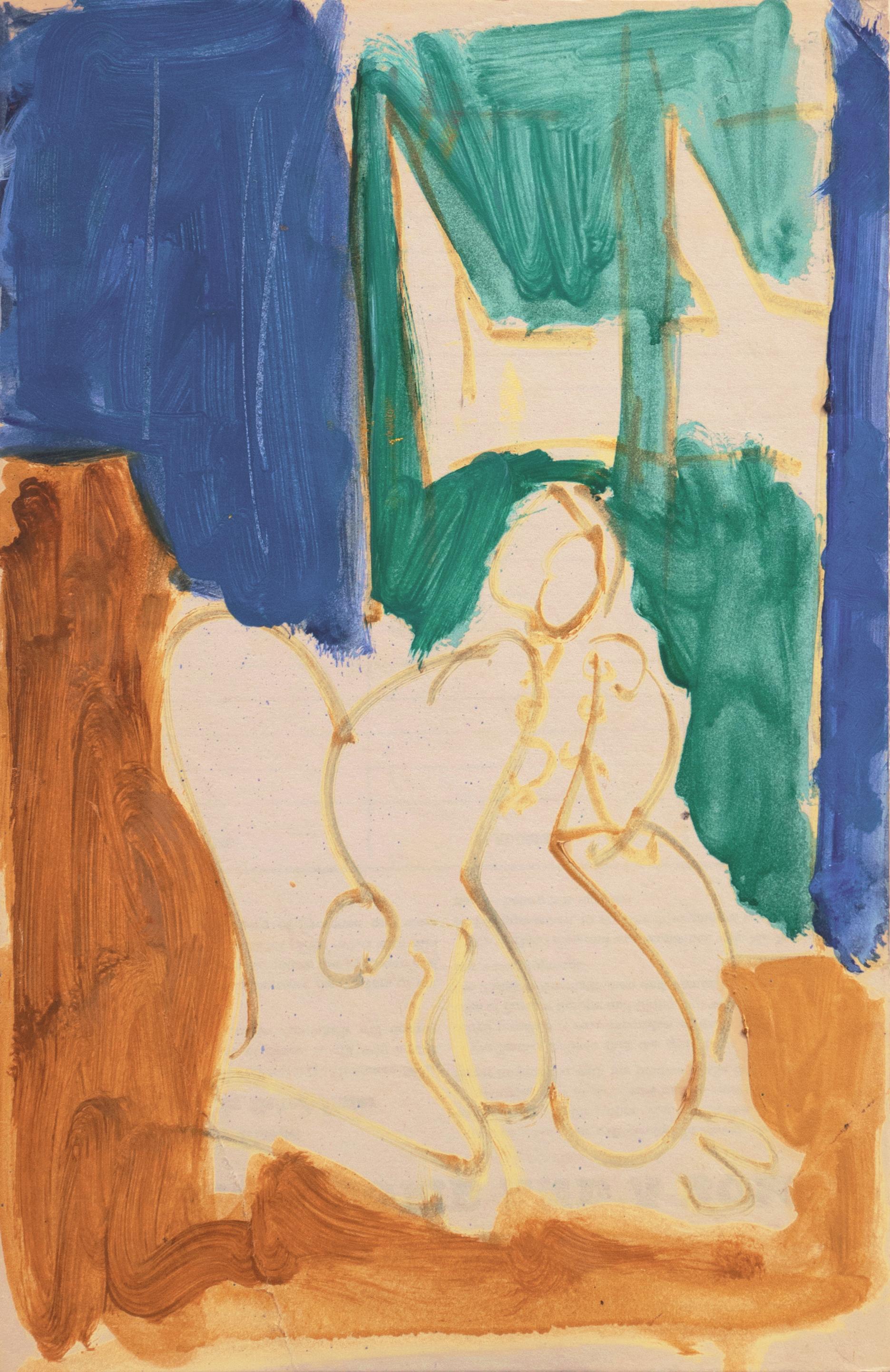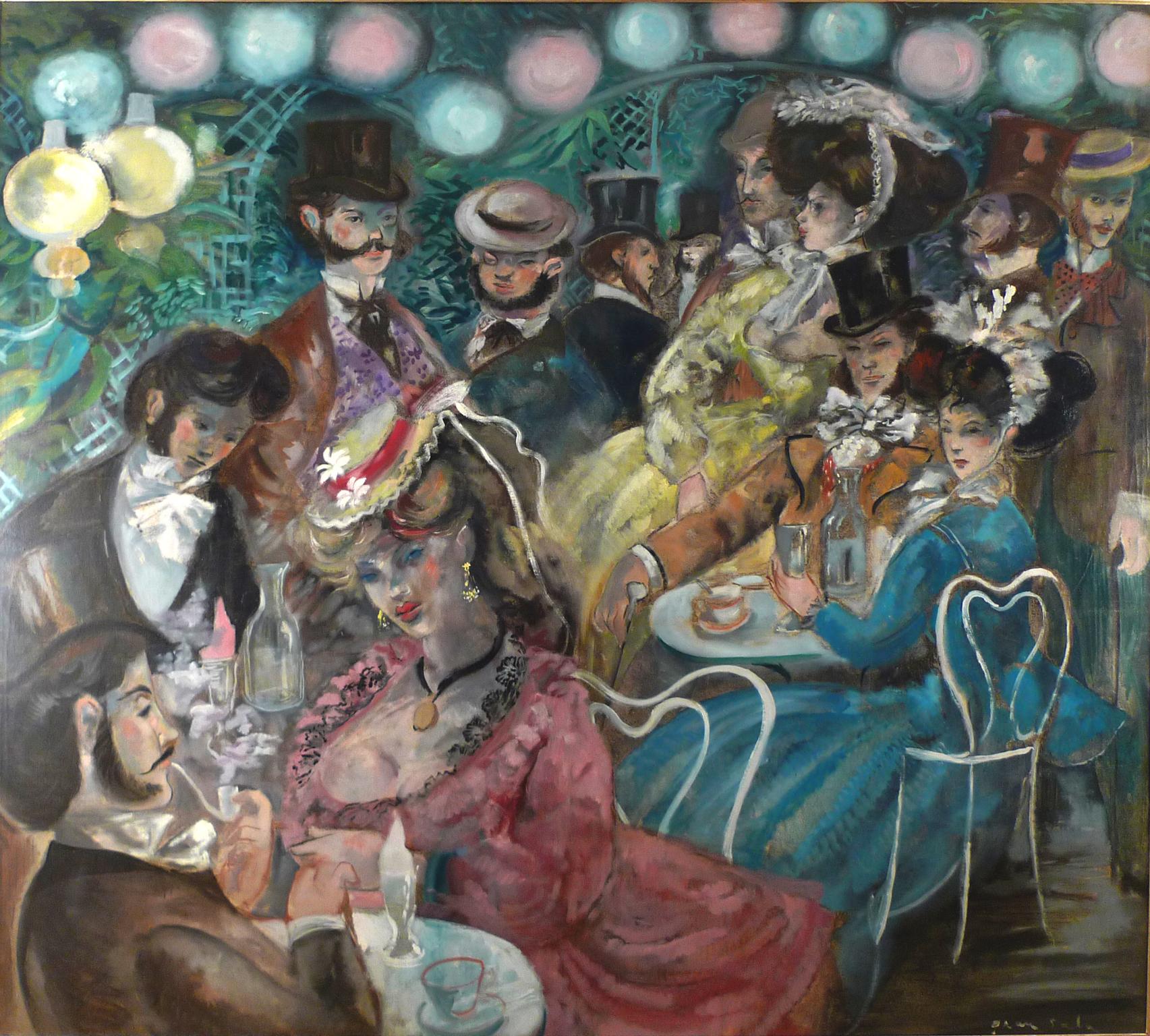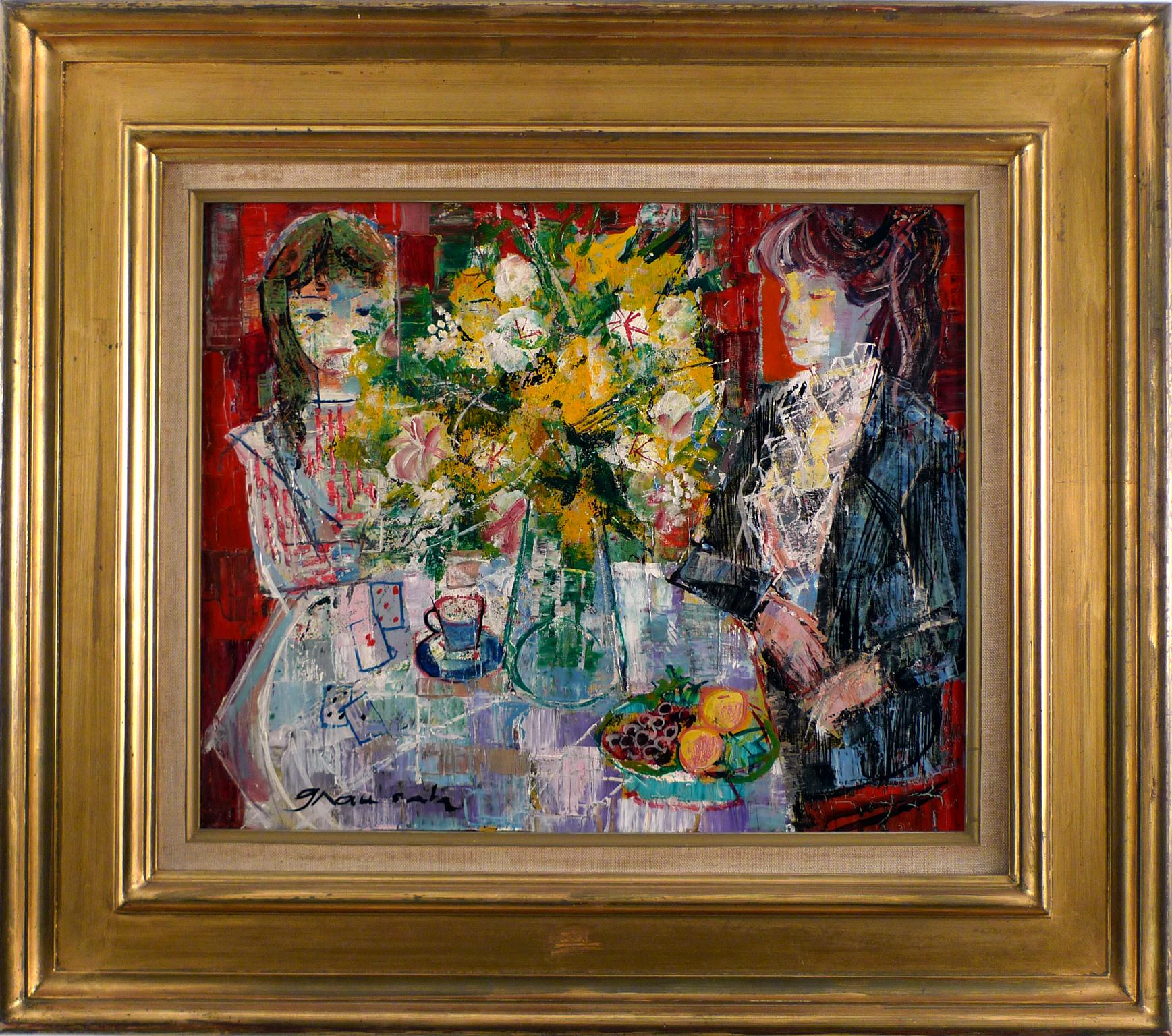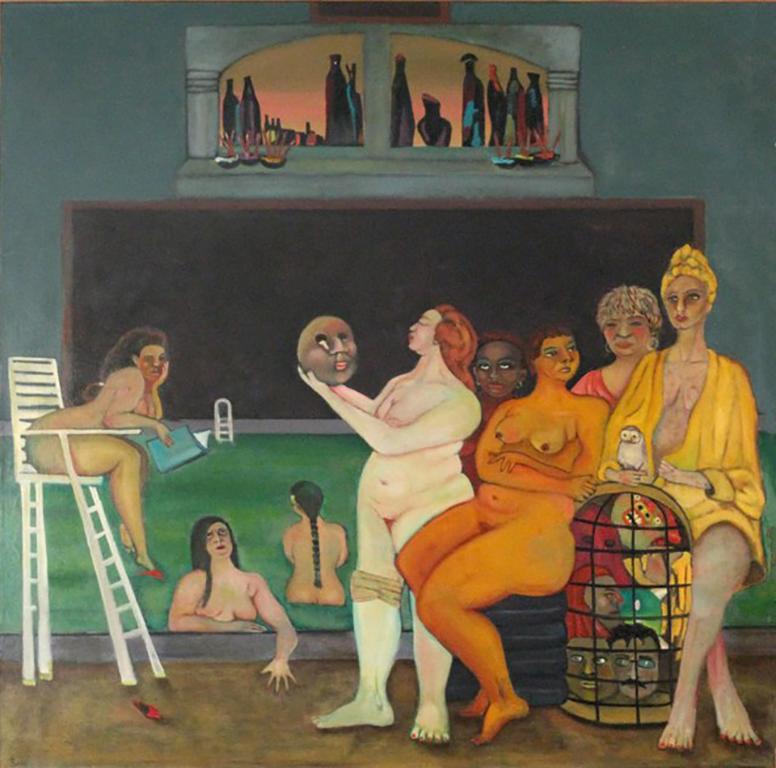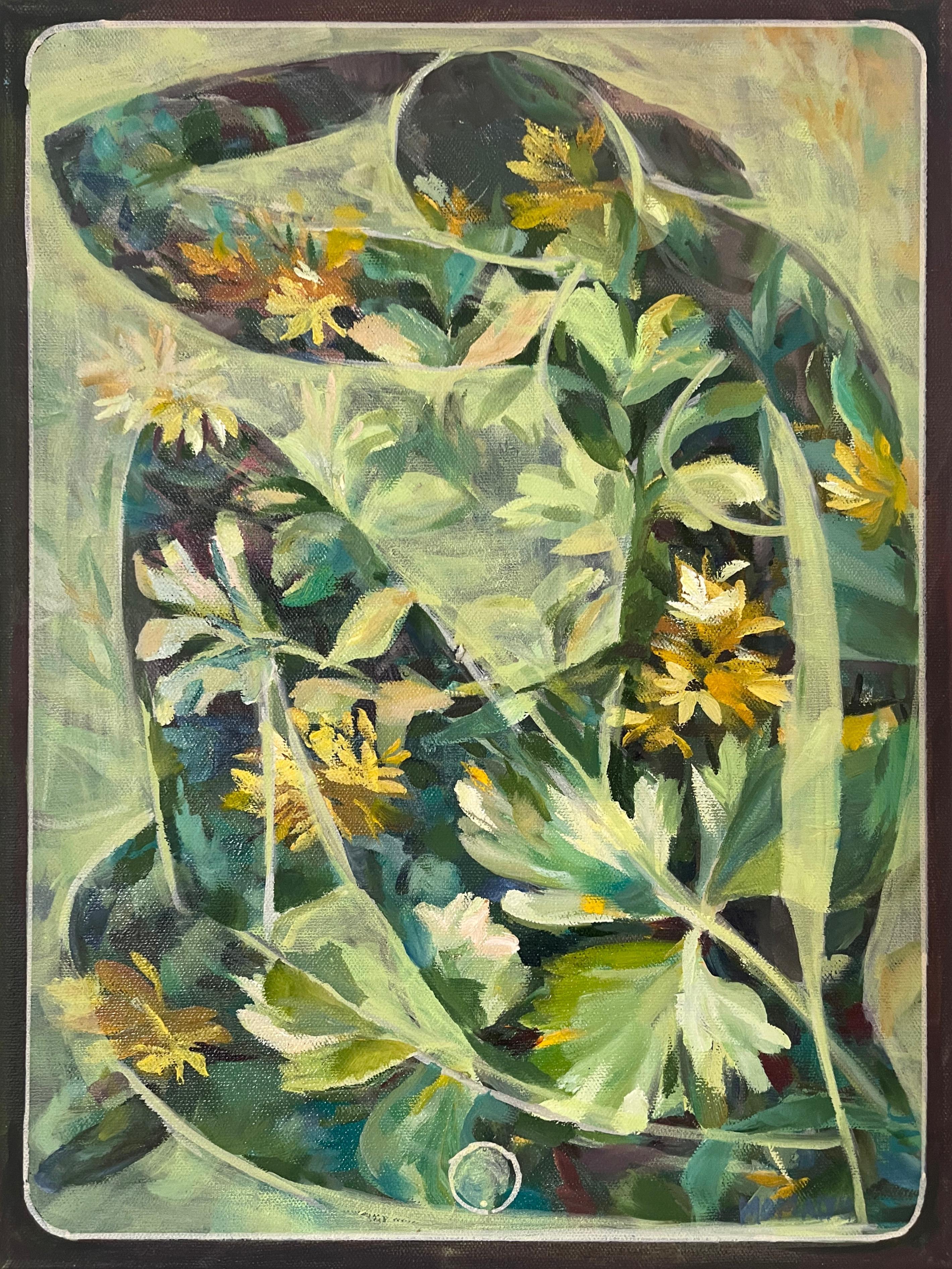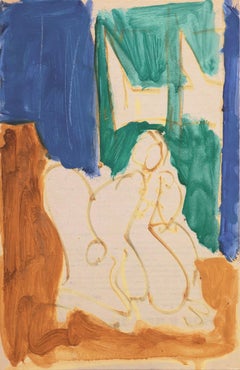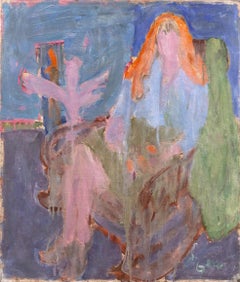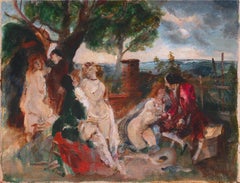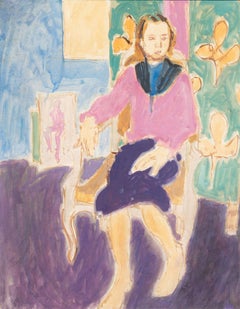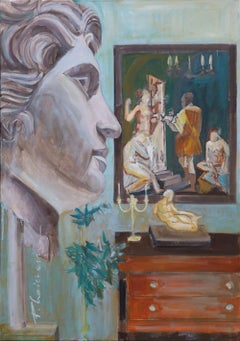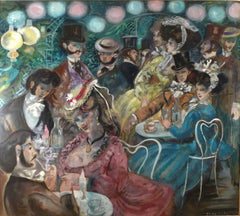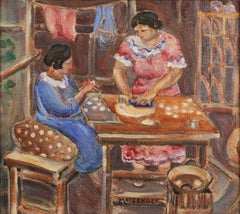
'Making Empanadas', California Watercolor Society, San Diego Museum of Art
View Similar Items
Want more images or videos?
Request additional images or videos from the seller
1 of 15
Ivan Messenger'Making Empanadas', California Watercolor Society, San Diego Museum of Art
About the Item
- Creator:Ivan Messenger (1895-1983, American)
- Dimensions:Height: 10 in (25.4 cm)Width: 10.75 in (27.31 cm)
- Medium:
- Movement & Style:
- Period:
- Condition:minor losses, minor restoration; frame: minor marks; shows well.
- Gallery Location:Santa Cruz, CA
- Reference Number:1stDibs: G14021634471
About the Seller
5.0
Platinum Seller
Premium sellers with a 4.7+ rating and 24-hour response times
Established in 1982
1stDibs seller since 2013
735 sales on 1stDibs
Typical response time: 1 hour
Authenticity Guarantee
In the unlikely event there’s an issue with an item’s authenticity, contact us within 1 year for a full refund. DetailsMoney-Back Guarantee
If your item is not as described, is damaged in transit, or does not arrive, contact us within 7 days for a full refund. Details24-Hour Cancellation
You have a 24-hour grace period in which to reconsider your purchase, with no questions asked.Vetted Professional Sellers
Our world-class sellers must adhere to strict standards for service and quality, maintaining the integrity of our listings.Price-Match Guarantee
If you find that a seller listed the same item for a lower price elsewhere, we’ll match it.Trusted Global Delivery
Our best-in-class carrier network provides specialized shipping options worldwide, including custom delivery.More From This Seller
View All'Woman Seated', Paris, Louvre, Académies Chaumière, LACMA, SFAA
By Victor Di Gesu
Located in Santa Cruz, CA
Stamped, verso, with estate stamp for Victor Di Gesu (American, 1914-1988) and created circa 1950.
A loose study of a woman seated in a dress, resting her chin on her hand and recli...
Category
1950s Post-Impressionist Figurative Paintings
Materials
Paper, Oil
'Woman Wearing Mantilla', Paris, Louvre, Académie Chaumière, Carmel, California
By Victor Di Gesu
Located in Santa Cruz, CA
Signed lower right 'Di Gesu' for Victor di Gesu (American, 1914-1988) and painted circa 1958.
A substantial oil a young woman, (possibly Victor's wife, the artist, Janet Ament), sho...
Category
1950s Post-Impressionist Figurative Paintings
Materials
Canvas, Oil
'Bacchanal', Paris Salon Modernist Oil, Royal Academy, Charlottenborg, Benezit
By Ludvig Jacobsen
Located in Santa Cruz, CA
Signed lower right, 'Ludvig Jacobsen' (Danish, 1890-1957) and dated 1926.
An exceptional early twentieth-century figural work by this notable Danish modernist and follower of Wattea...
Category
1910s Post-Impressionist Figurative Paintings
Materials
Canvas, Oil
California Post-Impressionist 'Woman Seated', Louvre, LACMA, Académie Chaumière
By Victor Di Gesu
Located in Santa Cruz, CA
Di Gesu estate stamp verso and painted circa 1955.
Winner of the Prix Othon Friesz, Victor di Gesu first attended the Los Angeles Art Center and the Chouinard Art School before movi...
Category
1950s Post-Impressionist Interior Paintings
Materials
Gouache, Laid Paper
'In the Kitchen', 19th Century Flemish Genre Painting
Located in Santa Cruz, CA
Style of Richard Brakenburgh (Dutch 1650-1702) and painted circa 1820.
Displayed in a shot silk mat with gilded slip within an 18th century, Dutch ...
Category
Mid-19th Century Realist Figurative Paintings
Materials
Paper, Oil
'La Taverne Pausset, Paris', Salon d'Automne, Salon des Independants, Benezit
By Edouard-Jean Dambourgez
Located in Santa Cruz, CA
Signed lower right, 'Dambourgez' for Edouard-Jean Dambourgez (French, 1844-1931), titled, 'Paris' and painted circa 1880. Titled with inscription, verso, on old backing, ''Taverne Pausset', grands boulevards a Paris".
A fine and detailed, cabinet-size oil painting showing an elegant Parisian cafe and bar, the interior lit by luminous, floor-to-ceiling stained-glass windows and filled with fashionably-dressed patrons drinking and socializing beneath a haze of pipe and cigar smoke. A minor, period masterpiece, providing an animated view of the city's fin-de-siècle nightlife, and characterised by finely observed and fully-realized figures showing an unusual degree of both social commentary and psychological penetration.
Edouard-Jean Dambourgez first studied with Jules Lefebvre and, subsequently, as an engraver and chromo-lithographer under Gustave Boulanger. In 1880, Dambourgez commenced exhibiting at the Salon des Artistes Français, and, in 1883, was elected a member of the Society. Throughout the 1880's, he exhibited frequently and with success at the major Paris salons including the Salon d'Automne, the Salon des Independants and the Salon des Champs-de-Mars. In 1884, he was commissioned by the Louvre to engrave all illustrations for the catalog to the Thiers Collection, recently bequeathed to the Museum. The recipient of numerous prizes, medals and juried awards, Dambourgez was awarded an honorable distinction by the Salon in 1888, and an honorable mention in 1891.
In 1888, the critic Albert Wolff recommended his painting, 'A Cheese Shop', for inclusion at the Salon des Artistes Français. In 1891, the city of Paris bought his large canvas, 'The Cream and Cheese Market...
Category
1880s Impressionist Interior Paintings
Materials
Oil, Postcard
You May Also Like
Looking at the World
By Paula Craioveanu
Located in Santa Monica, CA
Oil on canvas
Category
21st Century and Contemporary Fauvist Interior Paintings
Materials
Canvas, Oil
$3,040 Sale Price
20% Off
Paddock
By Emilio Grau Sala
Located in Madrid, ES
EMILIO GRAU SALA
Spanish, 1911 - 1975
PADDOCK
signed "Grau Sala" (lower right)
oil on canvas
21-1/3 x 25-1/2 inches (54 x 65 cm.)
framed: 27-1/2 x 32 inches (70 x 81 cm.)
PROVENANCE...
Category
1960s Post-Impressionist Figurative Paintings
Materials
Canvas, Oil
"Le Moulin de la Galette", Large 20th Century oil on canvas by Emilio Grau Sala
By Emilio Grau Sala
Located in Madrid, ES
EMIILIO GRAU SALA
Spanish, 1911 - 1975
LE MOULIN DE LA GALETTE
signed Grau Sala (lower right)
oil on canvas
59-1/4 X 67-1/4 inches (150.5 X 170 cm.)
framed: 62-1/2 X 70-1/4 inches (...
Category
1930s Post-Impressionist Figurative Paintings
Materials
Canvas, Oil
Francisco Bores, Sans titre
By Francisco Bores
Located in Madrid, ES
FRANCISCO BORES
Spanish, 1898 - 1972
SANS TITRE
signed and dated "Borès 42" (lower left)
oil on panel
13-3/4 x 10-5/8 inches (35 x 27 cm.)
framed: 19 x 15-3/4 inches (48 x 40 cm.)
BIBLIOGRAPHY:
Francisco Bores, Reasoned Catalogue, Volume I - Painting 1917-1944, Museo Nacional Centro de Arte Reina Sofía, Madrid, 2003, nº 1942 / 63, reproduced in p. 494
PROVENANCE
Carmen Bores Collection, Francisco Bores daughter
Private Collection, Madrid
Francisco Bores López (Madrid, May 5, 1898 - Paris, May 10, 1972) was a Spanish painter of the so-called New School of Paris.
His artistic training originated both in the Cecilio Pla painting academy, where he met Pancho Cossío, Manuel Ángeles Ortiz or Joaquín Peinado, and in the literary gatherings in Madrid related to ultraism.
At this time he made engravings and woodcuts for a large number of magazines such as Horizonte, Cruz y Raya, Index, Revista de Occidente. In 1922 he participated in the National Exhibition of Fine Arts.
In 1925 he participated in the first exhibition of the Iberian Artists Society. The limited success of this exhibition pushes him to go to Paris. In this city he shared a studio with the Spanish painter Pancho Cossío and also met Picasso and Juan Gris.
In 1927 he held his first solo exhibition in Paris. From this moment on, Bores integrates himself into the Parisian artistic environment where he will live practically his entire life. In 1928, his first exhibition in a gallery in the United States, in 1930 he exhibited again, within a group exhibition at the Museum of Modern Art in New York.
In the following years, he continued exhibiting in different galleries in Paris, such as the Georges Petit Gallery, the Bernheim Gallery and the Vavin Raspail Gallery. He also participates in several group exhibitions, highlighting the Exhibition of Contemporary Spanish Art...
Category
1940s Fauvist Interior Paintings
Materials
Oil, Panel
"Espagnoles, 1971", 20th Century Oil on Canvas by Artist Emilio Grau Sala
By Emilio Grau Sala
Located in Madrid, ES
EMILIO GRAU SALA
Spanish, 1911 - 1975
ESPAGNOLES, 1971
signed "Grau Sala" (lower left)
signed again, dated and titled "Grau Sala, 1971, espagnoles" (on the reverse)
oil on canvas
1...
Category
1970s Post-Impressionist Figurative Paintings
Materials
Canvas, Oil
"Interieur aux Fleurs Jaunes" 20th Century Oil on Canvas by Emilio Grau Sala
By Emilio Grau Sala
Located in Madrid, ES
EMILIO GRAU SALA
Spanish, 1911 - 1975
INTERIEUR AUX FLEURS JAUNES
signed "Grau Sala" (lower left)
signed again, located, dated and titled "Grau Sala, Paris 61, Interieur aux fleurs jaunes" (on the reverse)
oil on canvas
15 x 18-1/4 inches (38 x 46 cm.)
framed: 23-1/2 x 26-1/2 (59.5 x 67 cm.)
PROVENANCE
Private Parisian Collection
Interieur aux fleurs jaunes
This interior with two female figures where also the plans made in different colors are drawing the composition.
The abundant pictorial material distributed in geometric portions, gives life to the tablecloth and mother and daughter figures, in black and white colors of the jacket, while the black line takes care of the environments so as not to separate them.
The fruit bowl and flowers give a cheerful touch with their pastel tones.
Emilio Grau Sala came from a family of artists. He was born in Barcelona in 1911 and his father, a good cartoonist, had been one of the promoters of the "Salon des Humanistes" and made his exhibitions normally in "Sala Parés", Barcelona.
His first works were exhibited at the Salon des Independents. In the years 1930-33 he had painted under the influence of Cubism, especially that of Torres García. It is from that time a painting of the port of Barcelona, geometric and structural, which completely anticipated what would later be his work. His personality began fully painting watercolors and oils with a certain fantasy character, with a point of decorative instinct and themes full of naivety and grace. Romantic interiors, paddocks, port scenes, sailors, etc.
Grau Sala was essentially a Mediterranean painter, son of post-impressionism and enriched with French painting of the last fifty years. Mediterranean because his work has the color and light of that land.
He understood and assimilated impressionist painting very well, and for that reason he was never subject to the modules of a formulist realism, nor the sexigencias of the forms.
In Paris he found the best environment to give us a fruitful and intense work, because he could use the expressive potential of French art to enrich it.
All this made him a very esteemed artist everywhere where his work was known. He was also very often required to illustrate books and publications in Paris. Also his posters were very successful.
He painted a large number of subjects, but perhaps the theme of horse racing is where you can see in a very clear way the joyful and optimistic life that was lived at that time. In this fabric there is an explosion of juicy and vivid colors full of ingenuity and simplicity in its composition. Only a teacher could turn the complicated into something simple and beautiful. Before this work we feel a deep emotion, the emotion of before starting a horse race. Joy and nervousness at the same time. Especially since it is a direct emotion. There are no intermediaries between our eyes and what the work intends to tell us. This is precisely what seduces and catches us of this painting.
His works can be found in the Museums of the Villa de Paris, L'Ile de France Museum, at the Château de Sceaux, Honfleur Museum, La Rochelle Museum, Barcelona Museum...
Category
1960s Fauvist Interior Paintings
Materials
Canvas, Oil
Recently Viewed
View AllMore Ways To Browse
Richard Tobey Frame
50s British Art
Exhibition Poster Black And White
Kelly 50
Oaxaca Print
Costume Broadway
Hunting Scene Prints
Natural History Museum Vintage Prints
Science Poster
Talking Heads
Vintage School Ring
White Star Poster
1985 Dresses
Boston Poster
Chanel Black And White Photography
French Male Nude
Modernist Stone Sculpture
Outdoor Geometric Sculpture
